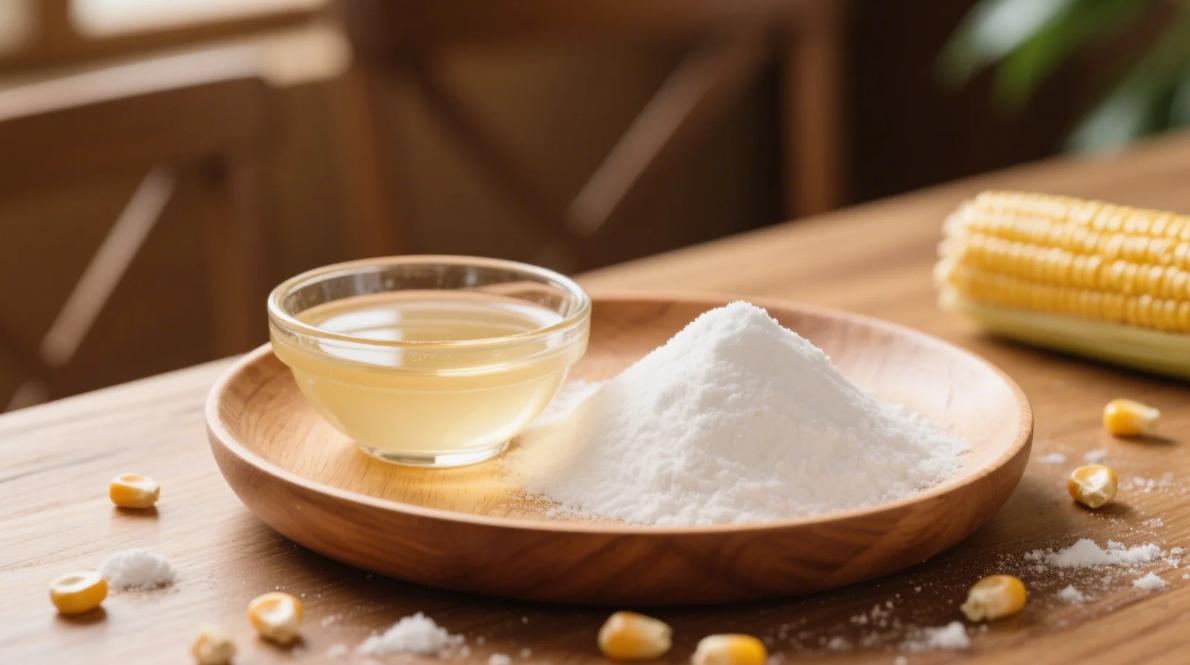1. Market Overview: The Rise of Clean-Label Sweeteners
The global organic fructose market is projected to grow at a CAGR of 8.5% from 2025 to 2030, fueled by surging demand for low-glycemic, natural sweeteners in food, beverages, and pharmaceuticals. Valued at 2.5billionin2025,thesectorissettoreach4.2 billion by 2030, with organic crystalline fructose powder and organic fructose syrup dominating 65% of the premium sweetener segment. As consumers pivot toward healthier lifestyles, organic fructose—derived from non-GMO fruits like apples, pears, and agave—stands out for its clean-label appeal, 30% lower glycemic index than sucrose, and alignment with sustainability goals.

2. Product Spotlight: Two Forms, One Mission
2.1 Organic Crystalline Fructose Powder
- Properties: High-purity (>99.5%), free-flowing crystals with rapid solubility and neutral sweetness.
- Applications: Ideal for protein bars, gluten-free baking, and powdered supplements due to its stability and texture-enhancing properties.
- Market Edge: Solar-dried production processes reduce carbon footprint by 40%, appealing to eco-conscious brands.
2.2 Organic Fructose Syrup
- Properties: Liquid form with 77% fructose content, excellent moisture retention, and cold-process compatibility.
- Applications: Dominates beverages (e.g., organic soft drinks, functional teas) and dairy alternatives for its smooth mouthfeel.
- Sustainability: Enzyme-fermented from upcycled fruit byproducts, reducing agricultural waste by 30%.
Synergy in Action: Blending powder (for dry mixes) and syrup (for liquid formulations) cuts production costs by 25%, enabling versatile product innovation.
3. Growth Drivers: Why Organic Fructose is Thriving
- Health-Conscious Consumers: 68% of global shoppers prioritize low-GI and diabetic-friendly options, driving demand for organic fructose in snacks and beverages.
- Clean-Label Mandates: USDA Organic and EU Organic certifications position fructose as a gold-standard alternative to synthetic sweeteners.
- Functional Food Boom: Rising popularity of keto, vegan, and sports nutrition products amplifies adoption—e.g., fructose syrup in plant-based yogurts and energy gels.
4. Emerging Applications: Beyond the Kitchen
- Pharmaceuticals: Crystalline fructose stabilizes pediatric oral rehydration solutions and enhances drug palatability.
- Beauty & Wellness: Fructose syrup is gaining traction in hydrating serums and probiotic skincare for its humectant properties.
- Sustainable Packaging: Fructose-based biodegradable films are replacing plastics in organic snack wrappers.
5. Regional Hotspots and Innovation Frontiers
- Asia-Pacific: China’s “Healthy China 2030” initiative targets 30% fructose penetration in functional beverages and infant formula.
- North America: Keto trends propel crystalline fructose sales (+200% YoY), with startups like PureFuel launching low-GI protein bars.
- Europe: Sugar taxes push Coca-Cola to reformulate 60% of beverages with fructose syrup, reducing added sugars by 50%.
Tech Breakthroughs: CRISPR-modified microbes boost fructose yield by 85%, while AI-driven formulations personalize sweetness ratios for metabolic health.
6. Future Trends: 2030 and Beyond
- Carbon-Negative Production: Solar-powered bioreactors and regenerative farming will make fructose net-zero by 2030.
- Personalized Nutrition: At-home gut tests sync with fructose dosing apps, creating a $500M DTC niche.
- Cross-Industry Fusion: Fructose as a carbon source in lab-grown meat media slashes production costs by 25%.
Sweetening Tomorrow’s World
Organic fructose isn’t just a sweetener—it’s a catalyst for healthier lives and a greener planet. From fueling functional foods with crystalline precision to nurturing sustainable innovation through syrup versatility, this dual-formula marvel is redefining clean-label nutrition. As industries embrace transparency and sustainability, organic fructose stands ready to lead the sweet revolution.